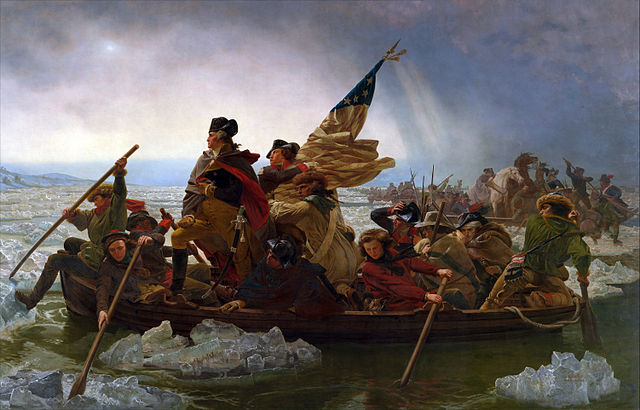Prince Whipple
When it comes to stories about black Americans during the Colonial and post-Revolutionary period, you’re not going to find many. That makes sense, unfortunately, as slavery and pervasive racism relegated African-Americans to second-class or non-person status. Almost by definition, any African-American whose basic biographical information we know from that period and place is somewhat notable for this reason. Prince Whipple was one of those people.

Washington Crossing the Delaware, above, is a famous 1851 painting by Emanuel Leutze. You’ve almost certainly seen it before, with then-General Washington standing in front of a small rowboat carrying a dozen men. The painting is ahistorical, of course — the event it depicts occurred after dark on Christmas Day, 1776 but it wasn’t painted until Washington was long gone. By the time this now-famous piece was created, most people who were alive during the Revolution were long forgotten by history. Whipple was one of those likely forgotten; it wasn’t until after the Civil War that his story was resurrected. But legend has it that his owner, William Whipple, then a general commanding the New Hampshire militia, was with Washington on the trek across the Delaware. If you look carefully at the painting (here’s a larger version), you’ll notice that there’s an African-American man breaking up ice at the front of the boat. That man is often rumored to be Prince Whipple.
That’s almost certainly not true, for a bunch of reasons, most notably that General William Whipple was a delegate to the Continental Congress, which at the time was sitting 135 miles away in Baltimore. But the retroactive association with the man depicted in the painting and prince Whipple underscores the slave’s fame.
So what is he actually famous for? Credit for that goes to William Whipple. Whipple was one of the signers of the Declaration of Independence, and like many delegates, was (obviously) a slave owner. But unlike most, he found his passion for liberty in conflict with his own slave ownership, and this conflict was impossible to rectify. Prince Whipple traveled with William throughout the Revolutionary War, serving the Continental army. According to one source, during their travels — Wikipedia puts the date on or around February 22, 1781 — William Whipple asked Prince to fight for their new country if need be. Prince replied that he “would fight in defense of the country to the last drop of [his] blood” if he were no longer a slave. William set Prince free (and made it official after the war). In doing so, William Whipple became the only signer of the Declaration to free his slaves during the Revolutionary War.
Bonus Fact: “Washington Crossing the Delaware” is also the name of an ingeniously written sonnet from 1936. The poem has fourteen lines (full text available here) in rhyming pairs, collectively telling the story depicted by the famous painting. And incredibly, each line is an anagram of the phrase “Washington Crossing the Delaware.”
From the Archives: Getting George: The history of Washington Crossing the Delaware.
